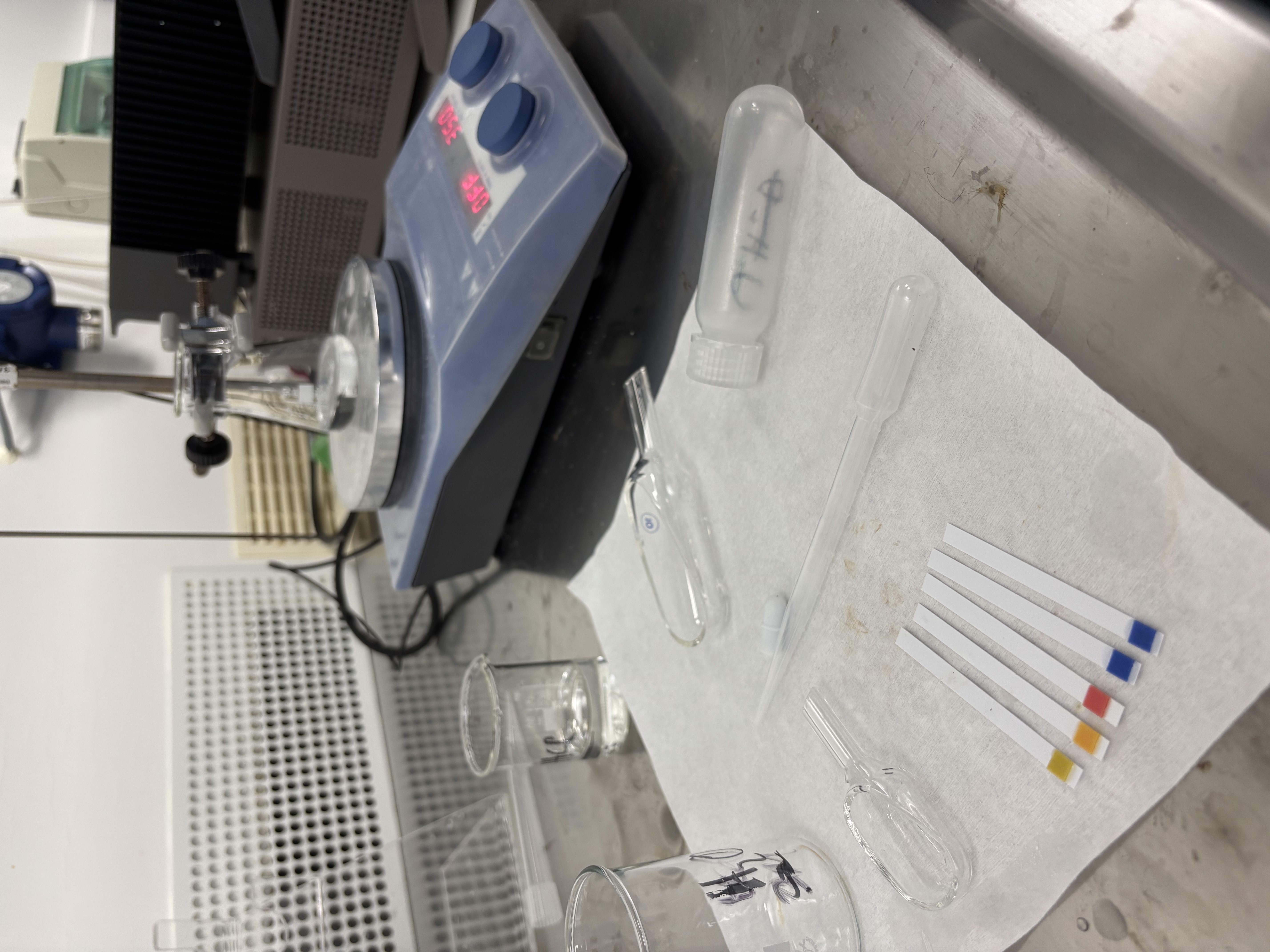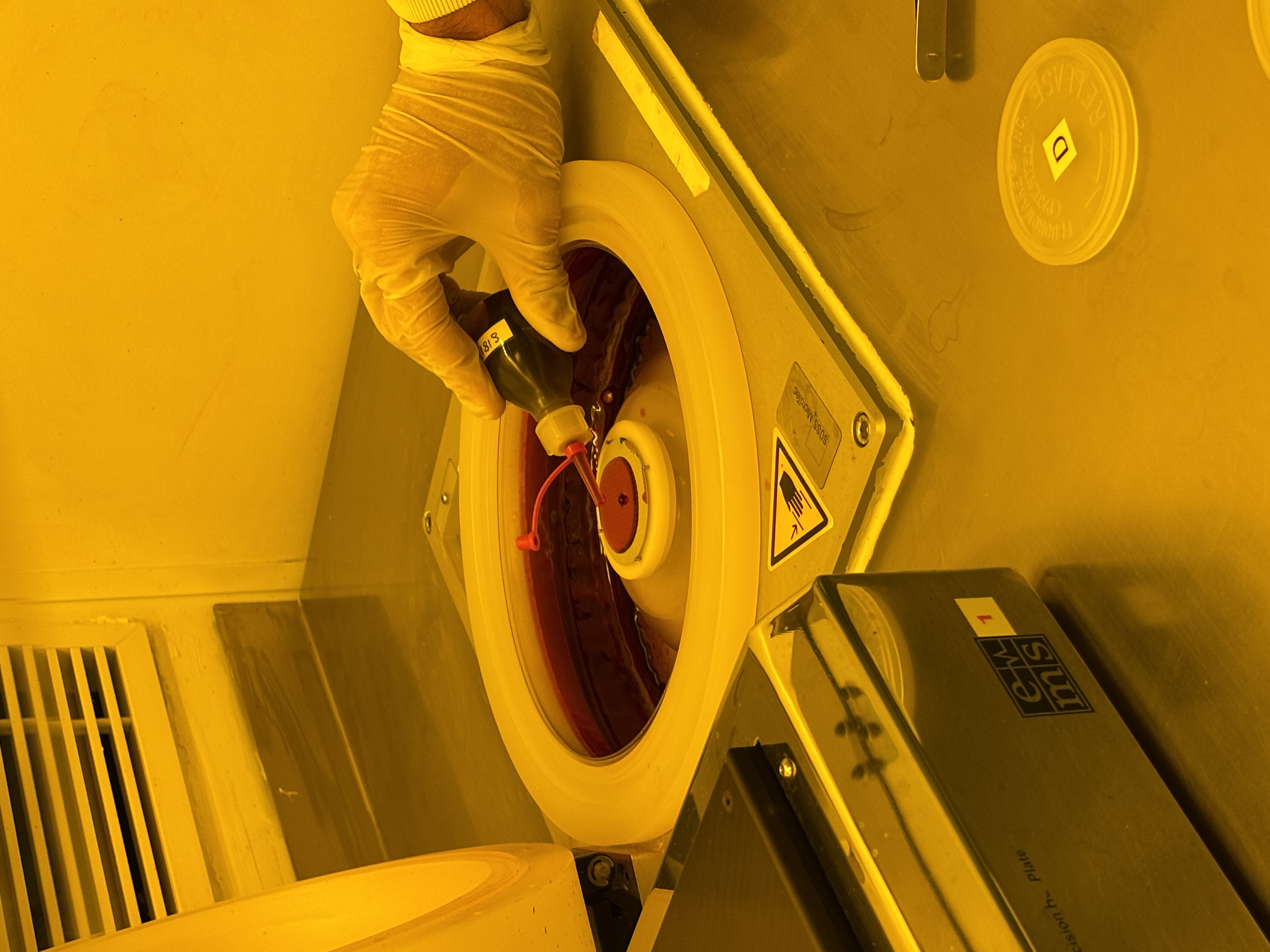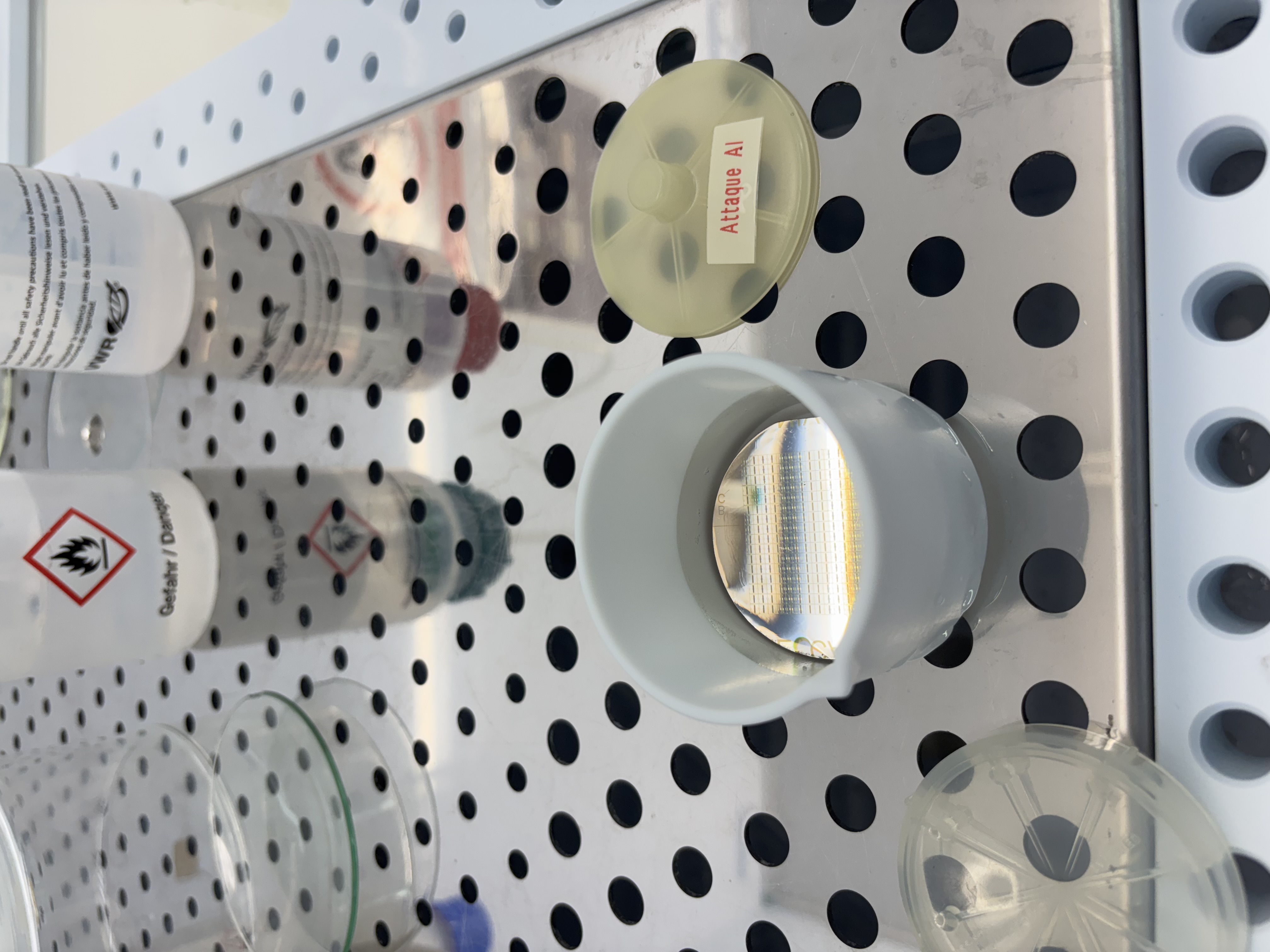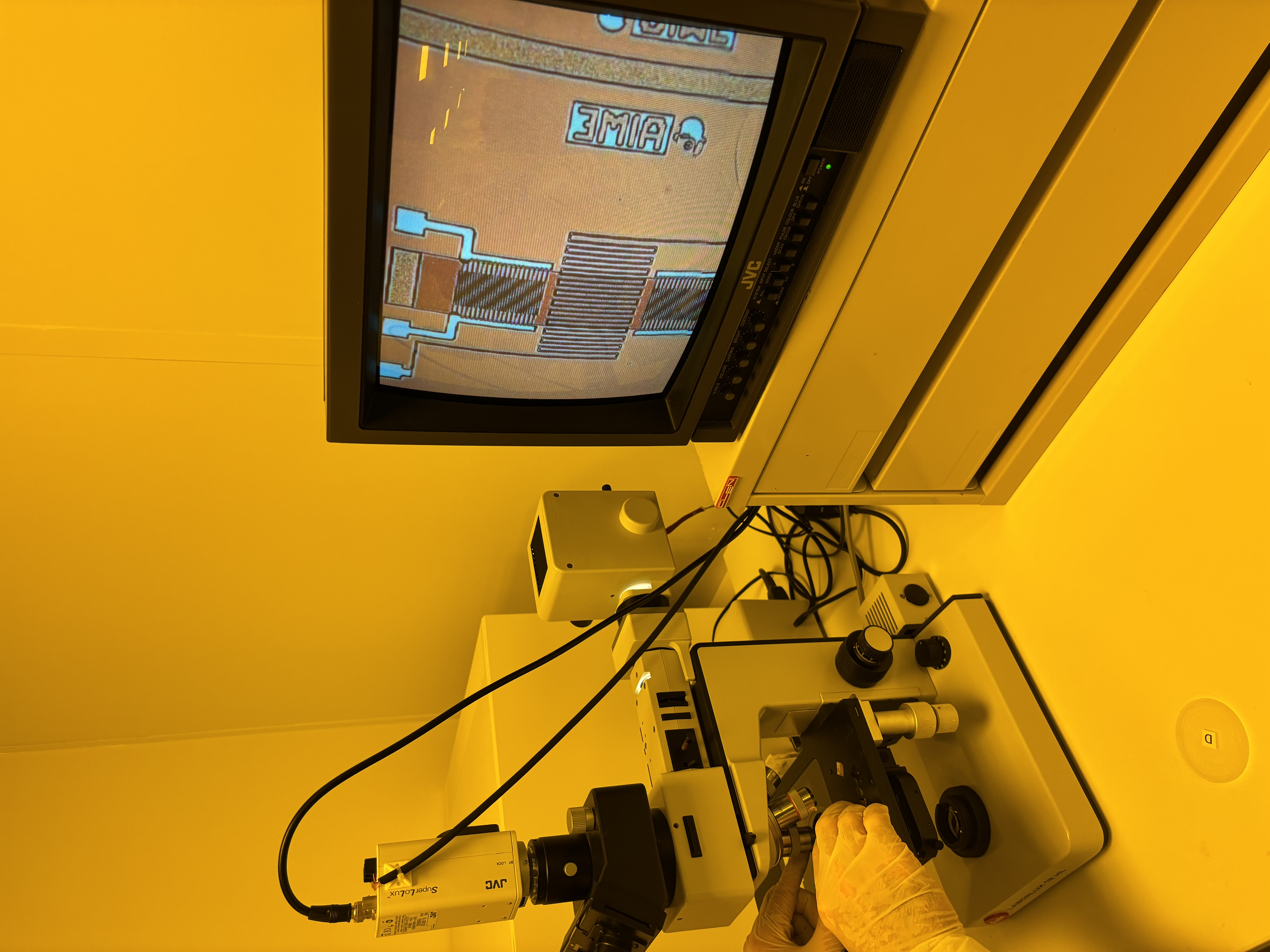AIME - Sensors
PART A: GENERALITIES
Presentation
The “AIME - Sensors” course, was an engaging and hands-on experience that focused on the creation and integration of nano-technology sensors. During a week at the AIME (Atelier Interuniversitaire de Micro-nano Electronique) we had the opportunity to create a gas sensor from a simple half-made wafer. This experience provided insight into the manufacturing process and the costs associated with creating a single sensor.
PART B: DESCRIPTIVE PART
Experience Details
Environment and Context
During this course, I had the opportunity to work on both theoretical and practical aspects of sensor technology. The relevance of sensors in modern technology, especially in IoT applications, was evident throughout the course. The hands-on sessions were particularly beneficial, allowing me to apply the concepts learned in class to real-world scenarios.
My Function
During the labs, I participated in the chemical synthesis of the nanoparticles and the assembly of the sensor. This included applying the chemical solution to the wafer and performing dielectrophoresis to position the nanoparticles correctly.
PART C: TECHNICAL PART
This section explores the fabrication steps of creating a gas sensor, focusing on the chemical and physical processes involved.
Fabrication Steps
A. Masking Oxidation
Chemical oxidation: H2SO4 + H2O2 - This step involves chemically oxidizing the wafer surface to create a protective mask.

B. Poly-Silicon Deposition
LPCVD furnace - Depositing a layer of polycrystalline silicon using Low-Pressure Chemical Vapor Deposition (LPCVD).

C. Polysilicon Doping (n-type)
Phosphorus impurity diffusion - Doping the polysilicon layer with phosphorus impurities to modify its electrical properties.

D. Photolithography No. 1: “Polysilicon Etching”
Etching the polysilicon layer to create the desired patterns using photolithography.
E. Organic Decontamination
Removing organic contaminants from the wafer surface to ensure clean processing.

F. Dry Oxidation
Performing dry oxidation to grow a thin oxide layer on the wafer surface.
G. Photolithography No. 2: “Contact Openings”
Etching openings in the oxide layer to create contact points for electrical connections.
H. Metallization
Depositing a metal layer on the wafer to form electrical contacts and interconnections.
I. Photolithography No. 3: “Metal Etching”
Etching the metal layer to define the metal contacts and interconnections.

J. Metal Annealing
Annealing the metal layer to improve its electrical properties and adhesion.

L. Sensor Assembly
The final step involved assembling the sensor, connecting the wafer to electronic components, and testing its functionality. Detailed information can be found in the Microcontroller Hardware Section.

M. Measures under Controlled Atmosphere
We conducted measurements under controlled atmosphere conditions to evaluate the gas sensors by exposing them to ammonia (NH3) and ethanol (C2H6O) at a concentration of 0.1% in dry air. The sensor’s resistance variation was recorded using Labview with a bias voltage of 20V.

PART D: ANALYTICAL PART
Knowledge and Skills Acquired
- Understanding the fundamentals of sensor technologies.
- Designing and integrating sensors.
- Applying chemical synthesis techniques for nanoparticle creation.
- Assembling sensors and connecting them to electronic components.
- Conducting experiments to assess sensor functionality and efficiency.
- Recording and analyzing data from sensor experiments.
Self Evaluation
This course was a total discovery for me as I had no prior skills in this area. Understanding the chemical concepts was greatly facilitated by the teachers, who explained and guided each step thoroughly. I was attentive enough to grasp and practice everything, so I didn’t encounter any issues.
My Opinion
Before this course, I didn’t know exactly how sensors were made. Thanks to this course, it was an interesting first experience that gave me new skills, not exactly in my predilection area, but in understanding how sensors we use every day are made. We started the labs directly with the silicon already engraved, but it would also be interesting to start from scratch and engrave sensors directly on silicon.
Project Link
You can find the complete project report on GitHub_Gas_Sensor.